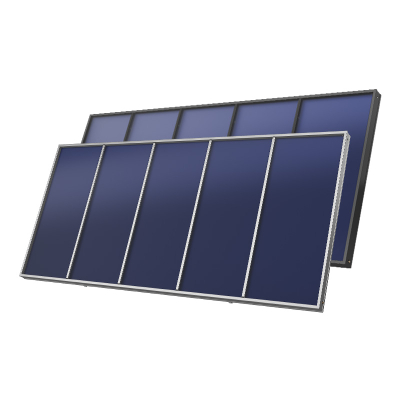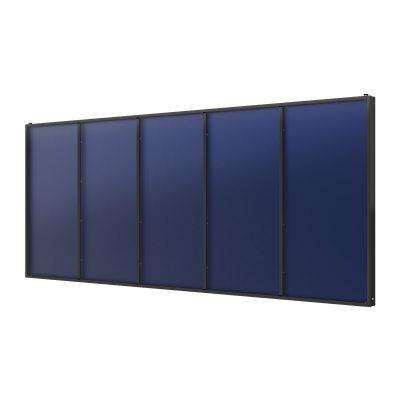How Can Heat Pipe Solar Water Heaters Support Office Buildings?
How Can Heat Pipe Solar Water Heaters Support Office Buildings? – A Case from Beijing's Intermediate Court
Heating water in large office buildings typically consumes vast amounts of electricity every year. Many public institutions and commercial facilities are now looking for sustainable solutions that cut energy bills while reducing carbon footprints. The heat pipe solar water heater offers one such solution—and it’s already working effectively at Beijing’s First Intermediate People’s Court.
Heat pipe solar water heaters are a clean and efficient method of producing hot water for buildings. Using vacuum tube technology and sealed copper heat pipes, these systems absorb solar radiation and convert it into usable thermal energy. Ideal for office facilities, they offer stable hot water supply with significant reductions in energy costs and CO₂ emissions.
Let’s look at how this system works in real-life applications—and how your building can benefit too.
Project Case: Beijing First Intermediate People's Court
In 2019, a customized heat pipe solar water heater system was installed at the Beijing First Intermediate People’s Court, located in Shijingshan District. The goal was to meet the daily hot water needs of its office staff through a clean energy source.
Location: Shijingshan, Beijing
Commissioned: 2019
Capacity: 20 tons of hot water per day
Use Case: Domestic hot water for office staff
Annual Electricity Savings: ~60,000 kWh
Annual Carbon Emissions Reduction: ~30 tons
The system replaced conventional electric heating with solar-powered thermal energy, helping the institution align with Beijing’s energy-saving and green-building initiatives.
How Does a Heat Pipe Solar Water Heater Work?
The core of this system is the heat pipe vacuum tube collector. It combines several technologies for high-efficiency thermal transfer:
Sunlight hits vacuum tubes, creating an insulated solar environment.
Heat pipes inside the tubes rapidly absorb and transfer energy.
The liquid inside the heat pipe vaporizes, rises, and transfers heat via a manifold.
The heat is stored or directly circulated to supply hot water.
The vapor condenses and returns, starting the cycle again.
This closed-loop design ensures low maintenance, fast heat transfer, and minimal energy loss—even in cold climates.
Why Is This Technology Suitable for Office Buildings?
Office buildings often require:
Steady domestic hot water supply
Reliable temperature control
Minimal maintenance
Long-term ROI
The heat pipe system meets these needs by:
Delivering water temperatures suitable for handwashing, cleaning, and kitchenettes
Functioning even during Beijing's winter months
Reducing reliance on grid electricity
For facilities like courts, schools, or municipal buildings, this solution is cost-effective and policy-aligned.
Cost Considerations and Return on Investment
A mid-sized solar water heating system typically ranges from $3,000 to $8,000, depending on:
Collector size
Tank capacity
Building layout
Installation costs
ROI: For a 20-ton/day system like this, the return on investment is typically within 4–5 years, thanks to:
Reduced electricity bills
Low operating costs
Minimal maintenance over 10–15 years of use
Environmental Impact: Carbon Reduction
Sustainability was a major driver behind the Intermediate Court’s solar upgrade. The system helps:
Cut 60,000 kWh of electricity use per year
Reduce 30 tons of carbon dioxide annually
Align with municipal green building standards
Every kilowatt-hour of electricity saved reduces the carbon footprint and operating expense.
Other Applications for Heat Pipe Solar Water Heaters
Hotels and resorts
School dormitories
Industrial employee showers
Government buildings
Clinics and medical offices
In each case, the system is customized to match daily water demand and installation space.
What Procurement Teams Should Consider
Before implementing a solar water heater, ask:
Is there roof space or façade for solar collectors?
How much hot water is used daily?
Do you need a thermal storage tank?
Is local government offering green subsidies or tax incentives?
A certified supplier can provide simulations, system design, and long-term technical support.
Client Feedback
“Since switching to the solar system, we’ve noticed lower energy bills and greater consistency in hot water supply. It runs quietly, cleanly, and efficiently.”
“We’re proud to support Beijing’s green initiatives with this installation. It’s a functional investment in sustainability.”
Summary
Heat pipe solar water heaters are ideal for institutions aiming to cut energy costs and emissions. The successful case at the Beijing Intermediate People’s Court shows how this solution delivers on reliability, efficiency, and sustainability.
Looking for a smart, low-carbon hot water solution for your office building?
💡 Contact us today to schedule a consultation or request a customized quote.




